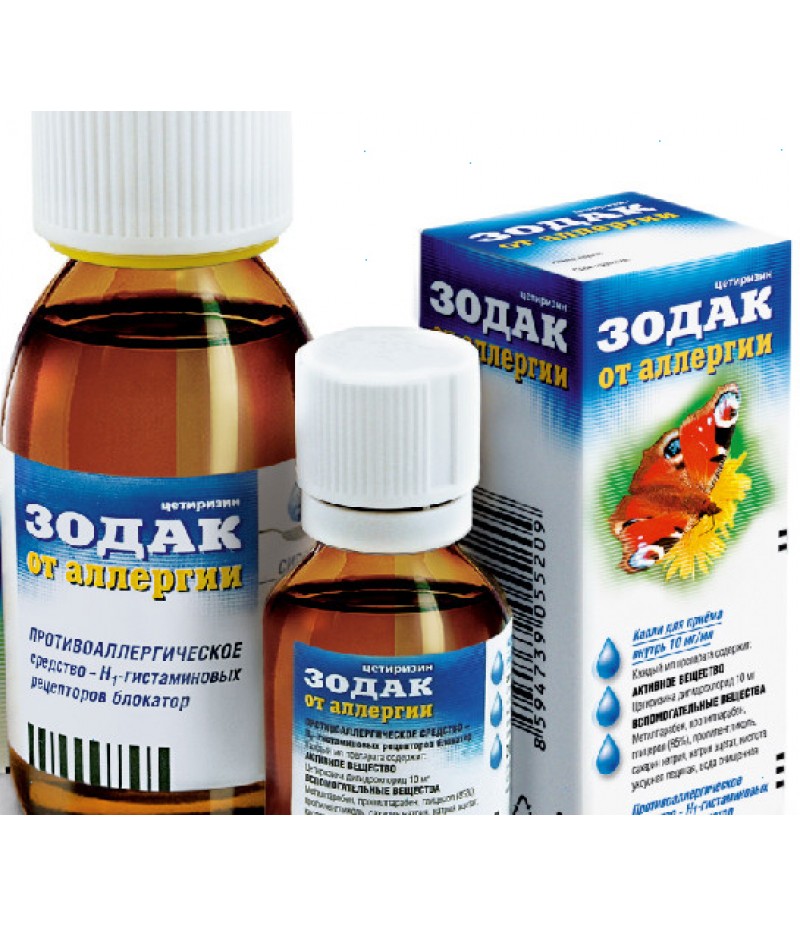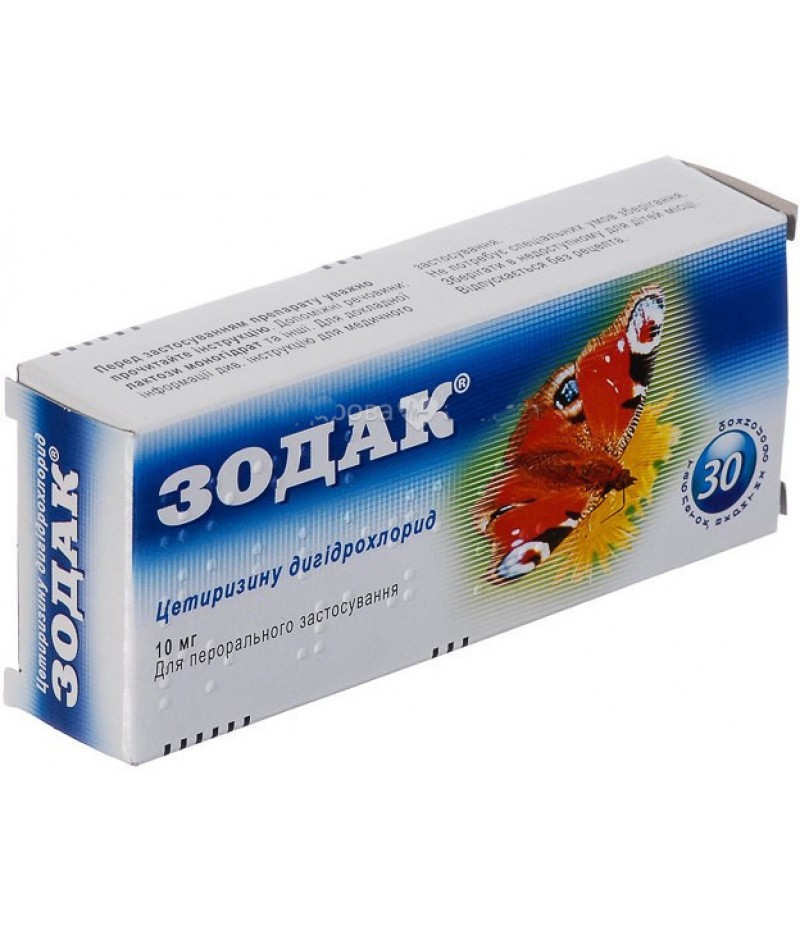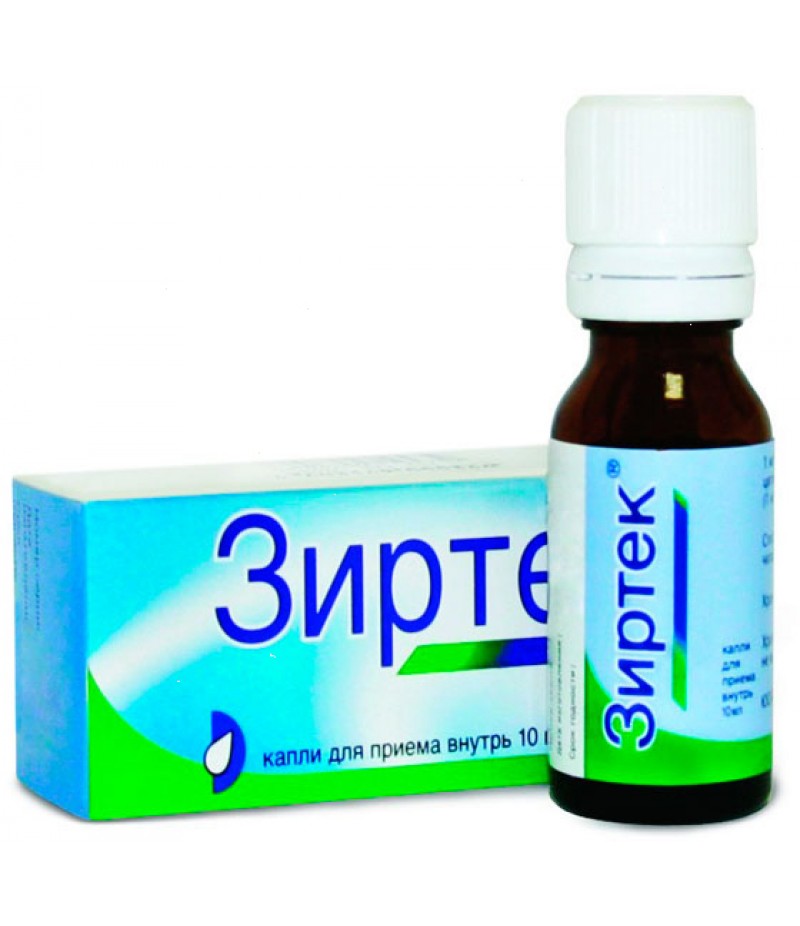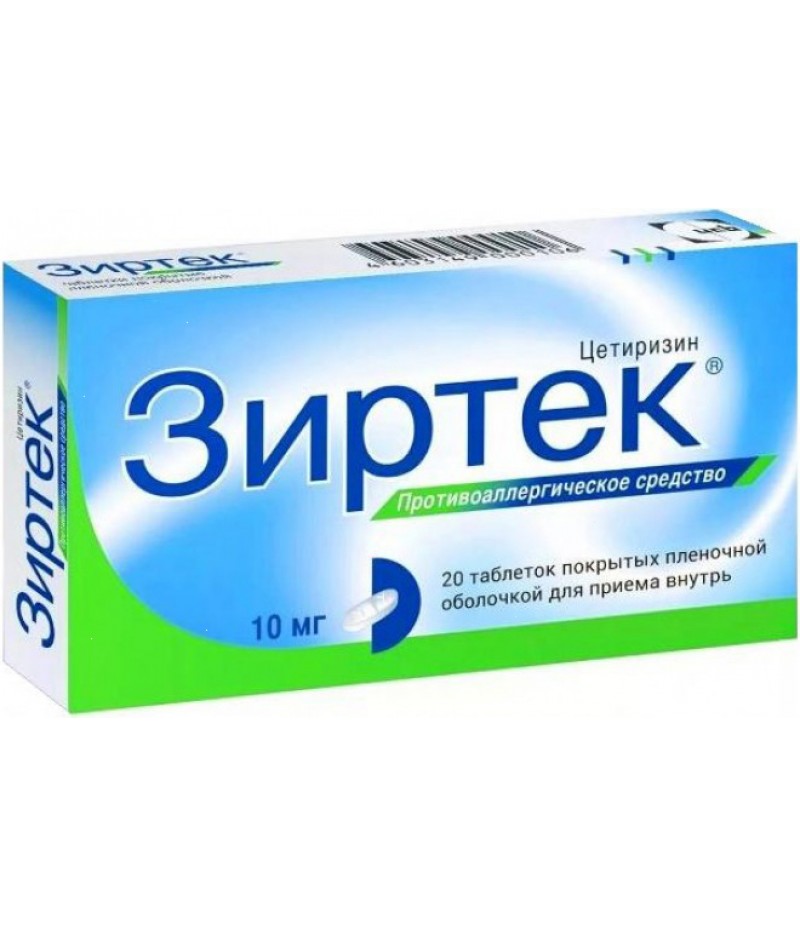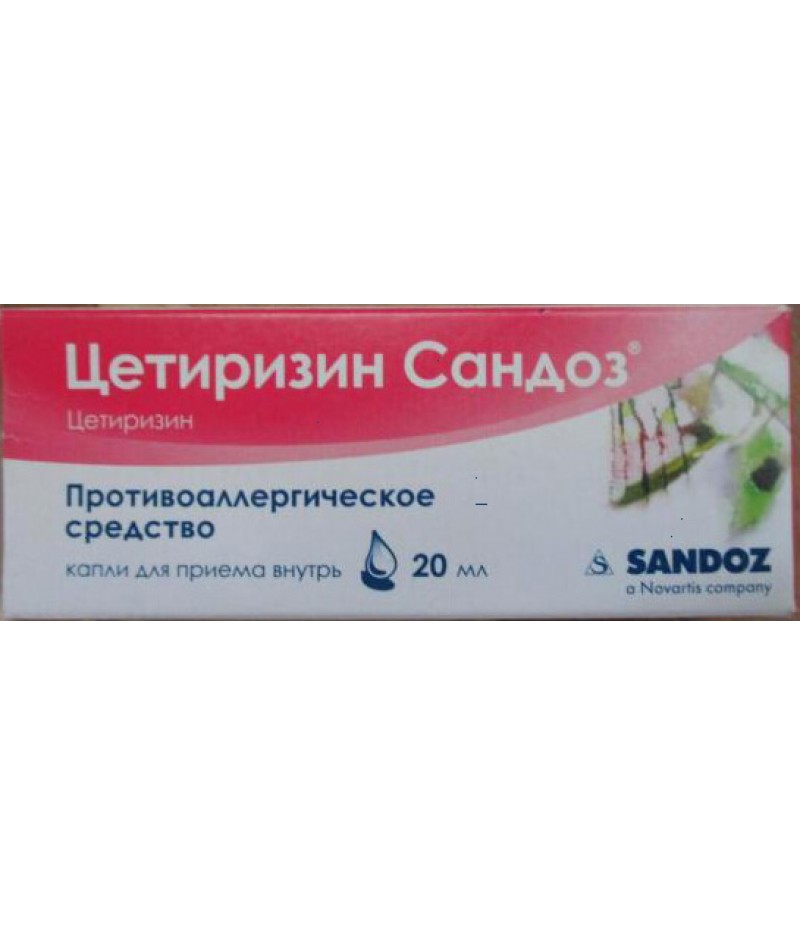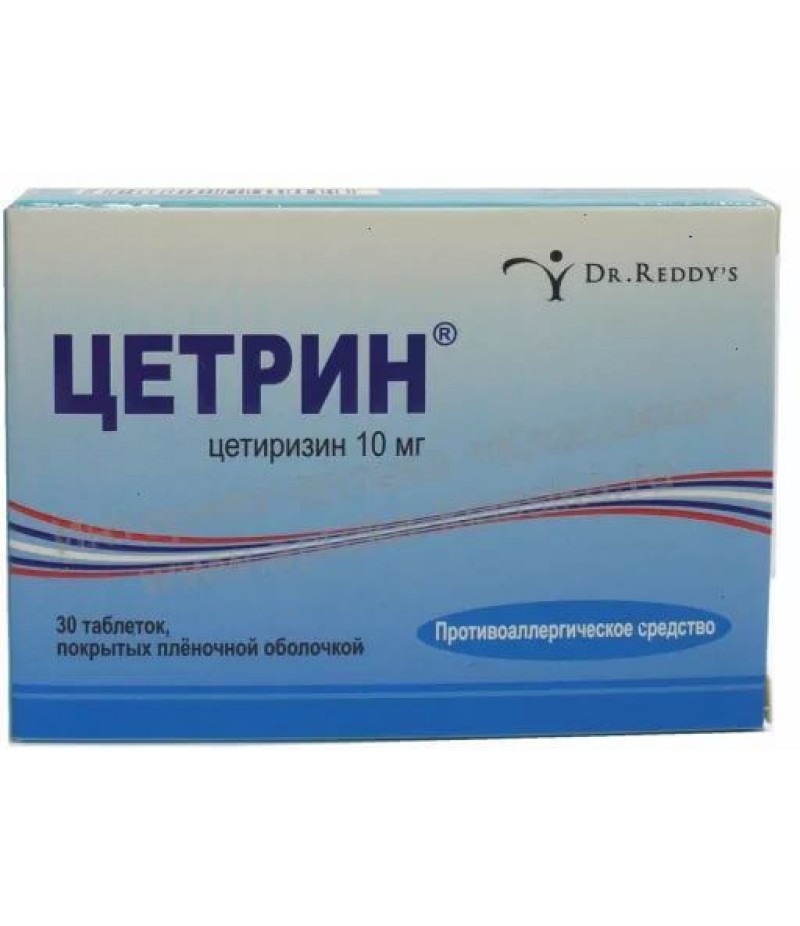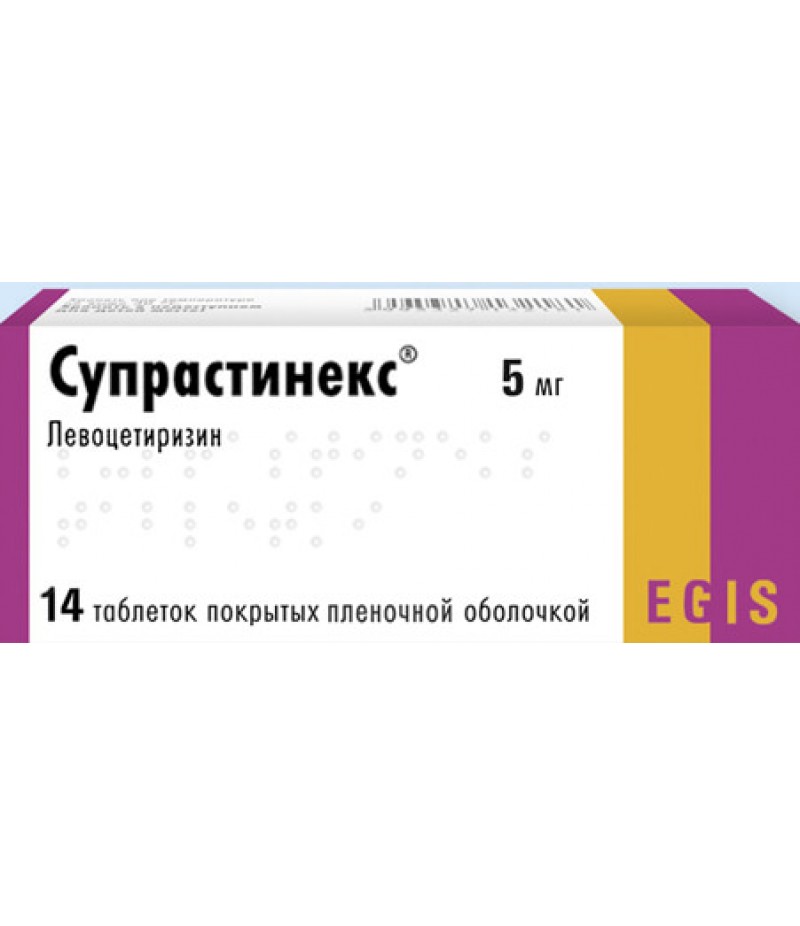Zodac drops 20ml
- $12.71
- Availability:In Stock
Zodac instructions for use You can buy Zodac drops hereClinical and pharmacological groupThe blocker of histamine H1 receptors. Anti-allergic drugForm of release, composition and packagingDrops for oral administration are clear, f..
Tags: drops
Zodac instructions for use
You can buy Zodac drops here
Clinical and pharmacological group
The blocker of histamine H1 receptors. Anti-allergic drug
Form of release, composition and packaging
Drops for oral administration are clear, from colorless to light yellow in color.
1 ml (20 drops) cetirizine dihydrochloride 10 mg
Excipients:
methylparahydroxybenzoate, propyl parahydroxybenzoate, glycerol,
propylene glycol, sodium saccharinate dihydrate, sodium acetate
trihydrate, acetic acid glacial, purified water.
20 ml - bottles of dark glass (1) with a lid-dropper - packs of cardboard.
pharmachologic effect
The blocker of histamine H1 receptors. Cetirizine is a competitive antagonist of histamine, with almost no anticholinergic and antiserotonin action. Has a pronounced anti-allergic effect, prevents development and facilitates the course of allergic reactions. Has antipruritic and anti-exsudative effect. Affects the early stage of allergic reactions, and also reduces the migration of inflammatory cells; oppresses the selection of mediators involved in a late allergic reaction. Reduces the permeability of capillaries, prevents the development of edema of tissues, relieves spasm of smooth muscles. Eliminates the skin reaction to the administration of histamine, specific allergens, and also to cooling (with cold urticaria). In therapeutic doses, it practically does not have a sedative effect. Against the background of the course, tolerance does not develop.
The effect of the drug begins in 20 minutes (in 50% of patients), after 1 hour (in 95% of patients) and persists for 24 hours.
Pharmacokinetics
Suction
After ingestion, cetirizine is rapidly and well absorbed from the digestive tract. Cmax is determined after about 30-60 minutes. Eating does not have a significant effect on the amount of absorption,
but in this case, the rate of absorption is slightly reduced.
Distribution
Binding to plasma proteins is approximately 93%. The Vd value is low (0.5 l / kg), the preparation does not penetrate into the cell. The drug does not penetrate the BBB. Excreted in breast milk.
Metabolism
Cetirizine is poorly metabolized in the liver with the formation of an inactive metabolite. When applied at a dose of 10 mg for 10 days, there is no accumulation of the drug.
Excretion
After a single dose of a single dose, T1 / 2 is about 10 hours. 70% of the dose is excreted by the kidneys mostly unchanged. The system clearance is about 54 ml / min.
Pharmacokinetics in special clinical cases
In children aged 2 to 12 years, T1 / 2 decreases to 5-6 hours.
Against the backdrop of chronic diseases and in elderly patients there
is an increase in T1 / 2 by 50% and a decrease in clearance by 40%.
In case of renal dysfunction (QC below 11-31 ml / min) and in patients
undergoing hemodialysis (QC less than 7 ml / min), T1 / 2 increases 3
times, the clearance decreases by 70%.
Hemodialysis is ineffective.
Indications
- seasonal and year-round allergic rhinitis and conjunctivitis;
- itching allergic dermatoses;
- Pollinosis (hay fever);
- urticaria (including chronic idiopathic);
- Quincke's edema.
Contraindications
- terminal stage of renal failure (CC <10 ml / min) (for taking tablets);
- hereditary intolerance to galactose, insufficiency of lactase or
glucose-galactose malabsorption syndrome (for taking tablets);
- Children's age to 6 years (for taking tablets);
- Children under 1 year of age (for taking drops);
- Pregnancy;
- the period of lactation (breastfeeding);
- Hypersensitivity to the components of the drug.
With
caution: chronic renal failure of moderate severity (correction of
dosing regimen is required), elderly age (glomerular filtration may be
reduced). When taking the pill: chronic liver disease (hepatocellular,
cholestatic or biliary cirrhosis) (dose correction is required only with
the concomitant decrease in glomerular filtration rate).
Dosage
Before using Zodak, you should consult your doctor to avoid complications.
The drug is taken orally, regardless of food intake.
Drops
Before taking the drop, dissolve in water.
Adults and children over the age of 12: 10 mg of cetirizine (20 drops) 1 time / day, daily, preferably in the evening.
Children aged 6 to 12 years: 10 mg cetirizine (20 drops) 1 time / day
or 5 mg cetirizine (10 drops) 2 times / day, morning and evening.
Children aged 2 to 6 years: 5 mg cetirizine (10 drops) 1 time / day or
2.5 mg cetirizine (5 drops) 2 times / day, morning and evening.
Children aged 1 to 2 years: 2.5 mg (5 drops) 2 times / day.
In patients with renal failure, the recommended dose should be reduced by a factor of 2.
In patients with impaired liver function, the dose of cetirizine should be somewhat reduced to 5 mg (10 drops) per day.
In elderly patients, patients with normal renal function do not need dose adjustment.
Instructions for opening a vial with a safety lid
The bottle is closed with a lid with a safety device that prevents its opening by children. The bottle opens when the lid is pressed hard down and then unscrewed against the clockwise direction. After use, the lid of the vial must be tightened again firmly.
Side effects
The drug is usually well tolerated. Adverse reactions occur rarely and have a transient nature. Determination
of the frequency of adverse reactions: very often (≥1 / 10), often (≥1 /
100, <1/10), infrequently (≥1 / 1000, <1/100), rarely (≥1 /
10,000, <1 / 1000), very rarely (<1/10 000), the frequency is unknown
(according to available data, it is not possible to determine the
occurrence frequency of the side effect).
From the hemopoietic system: very rarely - thrombocytopenia.
From the immune system: rarely - hypersensitivity reactions; very rarely - anaphylactic shock.
From the nervous system: often - headache, drowsiness, fatigue, dizziness; infrequently paresthesia; rarely - convulsions, impaired motor function; very rarely - perversion of taste, dyskinesia, dystonia, fainting, tremor, tick; frequency unknown - memory impairment, incl. amnesia.
Disorders of the psyche: infrequent excitation; rarely - aggression, confusion, depression, hallucinations, sleep disturbance; frequency is unknown - suicidal ideation.
From the side of the organ of vision: very rarely - disorders of accommodation, blurred vision, nystagmus.
From the side of the organ of hearing and balance: the frequency is unknown - vertigo.
On the part of the digestive system: often - dry mouth, nausea; infrequently - diarrhea, abdominal pain.
From the cardiovascular system: rarely - tachycardia.
From the respiratory system: often - rhinitis, pharyngitis.
From the side of metabolism: rarely - an increase in body weight.
From the urinary system: very rarely - dysuria, enuresis; frequency unknown - urinary retention.
From
the laboratory: rarely - a change in functional liver samples
(increased activity of hepatic transaminases, alkaline phosphatase, GGT,
and bilirubin concentrations); very rarely - thrombocytopenia.
From the skin and subcutaneous tissues: infrequently - rash, itching; very rarely - persistent erythema.
Allergic reactions: rarely - hives; very rarely - angioedema.
Common reactions: infrequent - asthenia, malaise; rarely - peripheral edema; frequency unknown - increased appetite.
Overdose
Symptoms:
confusion, dizziness, drowsiness, blocking, stupor, weakness, anxiety,
irritability, sedation, fatigue, headache, mydriasis, itching,
tachycardia, tremor, urinary retention, dry mouth, diarrhea,
constipation (most often when taking 50 mg cetirizine per day), malaise.
Treatment:
gastric lavage, the appointment of activated charcoal, the conduct of symptomatic therapy. The specific antidote is not known. Hemodialysis is ineffective.
Drug Interactions
Clinically significant interaction of cetirizine with other drugs has not been established.
Joint reception with theophylline (400 mg / day) leads to a decrease
in the total clearance of cetirizine (the kinetics of theophylline does
not change).
In recommended doses does not enhance the effect of ethanol (with a
blood concentration of not more than 0.8 g / l), however, it is
recommended to refrain from taking ethanol during treatment with the
drug.
special instructions
Patients with impaired renal function, liver and elderly patients should consult a doctor before taking the drug.
It is not recommended simultaneous use of drugs, oppressive central nervous system, alcohol.
Indication for patients with diabetes mellitus
Drops do not contain sugar, so they can be prescribed to patients with diabetes mellitus.
Impact on the ability to drive vehicles and manage mechanisms
During the period of treatment, patients should refrain from engaging
in potentially dangerous activities that require a high concentration of
attention and speed of psychomotor reactions.
Pregnancy and lactemia
Contraindicated in pregnancy and lactation (breastfeeding).
Application in childhood
Tablets are used in children older than 6 years.
In case of violations of kidney function
Patients with severe renal dysfunction should be prescribed by the doctor individually, in a reduced dose.
With violations of liver function
Patients with severe impairment of liver function are prescribed by the doctor individually, in a reduced dose.
Application in old age
To the elderly, the drug is prescribed by the doctor individually, in a reduced dose.
Conditions of leave from pharmacies
The drug is approved for use as a means of OTC.
RU.CTR.15.09.82
Terms and conditions of storage
Tablets should be stored at a temperature of no higher than 25 ° C. Shelf life - 3 years.
Drops do not require special storage conditions. Shelf life - 3 years.
The drug should be stored out of the reach of children.

